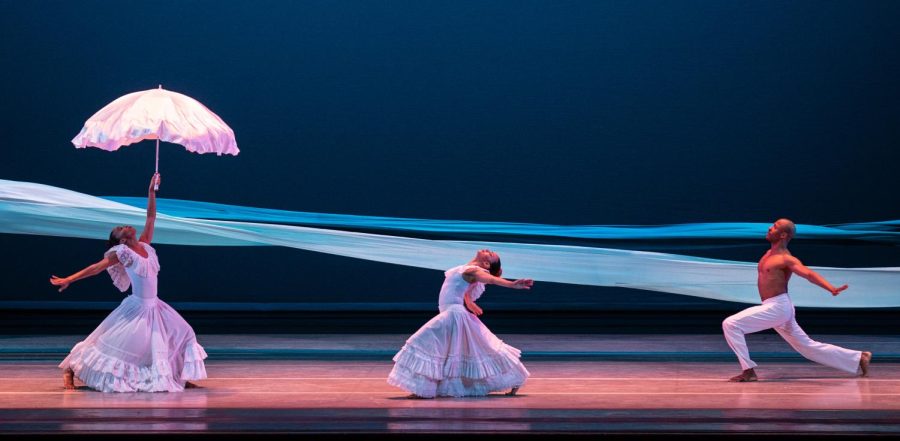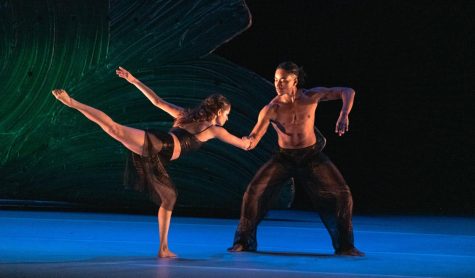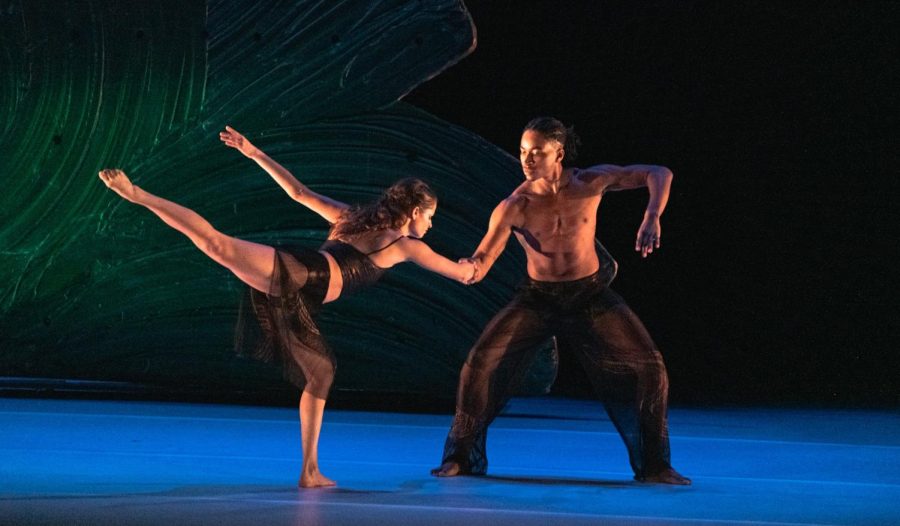Misty Copeland: Struggle, success, and pointe shoes
Raider Times photo / Kirsten Aucoin
Misty Copeland, principal dancer for the American Ballet Theatre, listens to a question from the audience at the John F. Kennedy Presidential Library and Museum on Aug. 28, 2017.
September 2, 2017868 Views
Misty Copeland is a principal dancer for the American Ballet Theatre … and she has a story that has inspired nearly as many people as her dancing has awed.
You could feel this in the room Aug. 28, 2017, at the John F. Kennedy Presidential Library and Museum, where people had gathered to hear her speak. The event had a waitlist, and streamed online for those who could not get in. One woman stated that she had traveled from out of state.
The crowd applauded as Copeland made her way to the stage. Meghna Chakrabarti — host of “Radio Boston” and the moderator for the evening — fidgeted in her chair.
“If you see me doing this frequently, throughout this evening, it’s because I’m sitting next to someone who has perfect posture and alignment…” she joked, gaining some laughs from the audience.

Misty Copeland (right), principal dancer for the American Ballet Theatre, chats with Meghna Chakrabarti at the John F. Kennedy Presidential Library and Museum on Aug. 28, 2017.
Though the talk started cheery, it soon got into the serious issues.
Misty Copeland did not have the beginnings of your typical ballerina. She started dancing at the late age of 13, taking a class at a Boys & Girls Club. Her teacher, Cynthia Bradley, invited the teen to study at Bradley’s own studio and would go on to play a huge role in Copeland’s life. To this day, I can go on a blog and read that I have the most hideous body and I’m fat. — MISTY COPELAND
At the time, Copeland was living in a motel suite with her single mother and five siblings. She was on food stamps. She was traveling two hours on a bus from school to dance practice. Her dance teacher knew none of this.
What Bradley did know was that the young Misty Copeland had serious talent and potential. She was up on pointe three months into her training, and was taking part in professional performances after a little over a year.
However, Copeland’s home life was still difficult and dancing was becoming a strain — she had to tell Bradley that she needed to quit.
“There was a breaking point when, um, I told [Bradley] that I could no longer dance because it was just — it was too much responsibility,” Copeland shared. “My mother had five other children that she was trying to raise and keep in school and, um, this was just an extracurricular activity to her.”
Bradley was surprised, but insisted on giving the teen a ride home after being told the news. While dropping her off, she saw the truth of Copeland’s living situation. She started to drive away, before deciding to go back to the motel and give her student’s mom an offer.
“I don’t know where I’d be if that never happened,” Copeland said, “She turned around and she came back and she asked my mother if I could live with her.”
Copeland’s mother agreed, and the young ballerina’s life was changed.
When she was 16, she went to the American Ballet Theatre’s summer intensive program and ended up being offered a position in their junior company. Her mother refused to send her off until she graduated, but Copeland was offered the position again the following year and took it.
At 17 — the day after she graduated high school — she found herself moving from San Pedro, Calif., to New York City and touring with ABT in Asia. Copeland spoke of the experience: “It was shocking, but I wasn’t afraid. I was ready.”
That was the start of a dancer who would go on to have a documentary made about her, write a memoir, judge on shows such as “So You Think You Can Dance”, be interviewed with President Barack Obama, and become the first female African-American principal dancer in the American Ballet Theatre’s history.
“There were times throughout my training where, I mean, I clearly was the only black girl in the class.” Copeland said, later adding: “I don’t know that I thought much about it, but I thought that I felt more like an outsider, because I had only been dancing for a year and a half at the time, than anything.

Misty Copeland, principal dancer for the American Ballet Theatre, listens to a question from the audience at the John F. Kennedy Presidential Library and Museum on Aug. 28, 2017.
“It was once I became a professional dancer that it was a negative thing. It turned into a negative thing. And people were talking about it around me and they were bringing up, you know, the fact that I could be the first African-American female soloist in over around two decades, and ‘There’s never been a black woman,’ and so all of these things it looks like — I never thought about about this — and it made me really look around and it made me want to learn more about my history as a black woman in the classical ballet world.”
Copeland went on to talk about how she tried learning what she could about black dancers who had come before her, and how it could be difficult to find that information as there wasn’t exactly books on the subject. There were times throughout my training where I clearly was the only black girl in the class. — MISTY COPELAND
She also talked about unique issues, such as being asked to wear makeup for one of the ballets to lighten her skin and contour her nose, so that she would look more uniform. She told her company that she wasn’t comfortable changing her appearance so much, and they accepted that response — something Copeland said she was thankful for since she feels many companies would simply tell their dancer to leave if they refused.
That brings up the issue of body image. Copeland shared that she had been told many times that she didn’t have a “ballerina body” because of her skin color and build.
“To this day,” Copeland stated, “I can go on a blog and read that I have the most hideous body and I’m fat.”
The talk ended with some members of the audience being allowed to ask questions — such as her favorite roles (Juliet and Giselle), favorite costume (Firebird), how many pointe shoes she went through a week (around 10) before she went on to sign books.
What’s next for her? She’s going back to the American Ballet Theatre in September for their fall season, she recently became a spokesperson for one of Estée Lauder’s beauty campaigns, she published her third book (“Ballerina Body”) earlier this year, and she’s listed to be in Disney’s upcoming film “The Nutcracker and the Four Realms.”
–Sept. 2, 2017–
























